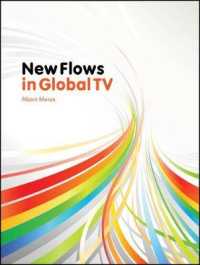基本説明
Examines the advent of television and the impact it had on the established mass media - radio, film, newspapers, and magazines.
Full Description
The new edition of James L. Baughman's successful book The Republic of Mass Culture examines the advent of television and the impact it had on the established mass media-radio, film, newspapers, and magazines. When television captured the largest share of the mass audience by the late 1950s, rival media were forced to target smaller, subgroup markets with novel content: rock 'n' roll for teenage radio listeners in the 1950s, sexually explicit films that began to appear in the 1960s, and analytical newspaper reporting in the 1970s and 1980s. The growing popularity of cable TV posed new complications, especially for network television. The capacity of individual media industries to adapt not only determined their success or failure but also shaped the content of their products. Two new chapters examine media entrants like Fox News, technologies such as the Internet, and increasing industry concentration. Baughman discusses significant changes in media economics and audience demand that are having profound effects on radio program formats, television news coverage, and the very existence of newspapers.
Carefully drawing on interdisciplinary communication research, The Republic of Mass Culture presents a lively analysis of the shifting objectives and challenges of the media industries.
Contents
Series Editor's Foreword
Acknowledgments
Introduction
1. The Voluntary Propagandists
2. Americans and Their Mass media in 1945
3. Test Patterns: Television Comes to America, 1945-1955
4. The War for Attention: Responding to Television, 1947-1958
5. Evenings of Avoidance: Television in the 1960s
6. Competing for the Marginal: Television's Rivals, 1958-1970
7. Network Television Triumphant, 1970-1981
8. The Babel Builders: Televison's Rivals, 1970-1990
9. The Shrinking Mass: Television and Mass Culture in the 1980s
10. No Coutervailing Motives, 1991-1996
Bibliographical Essay
Index







